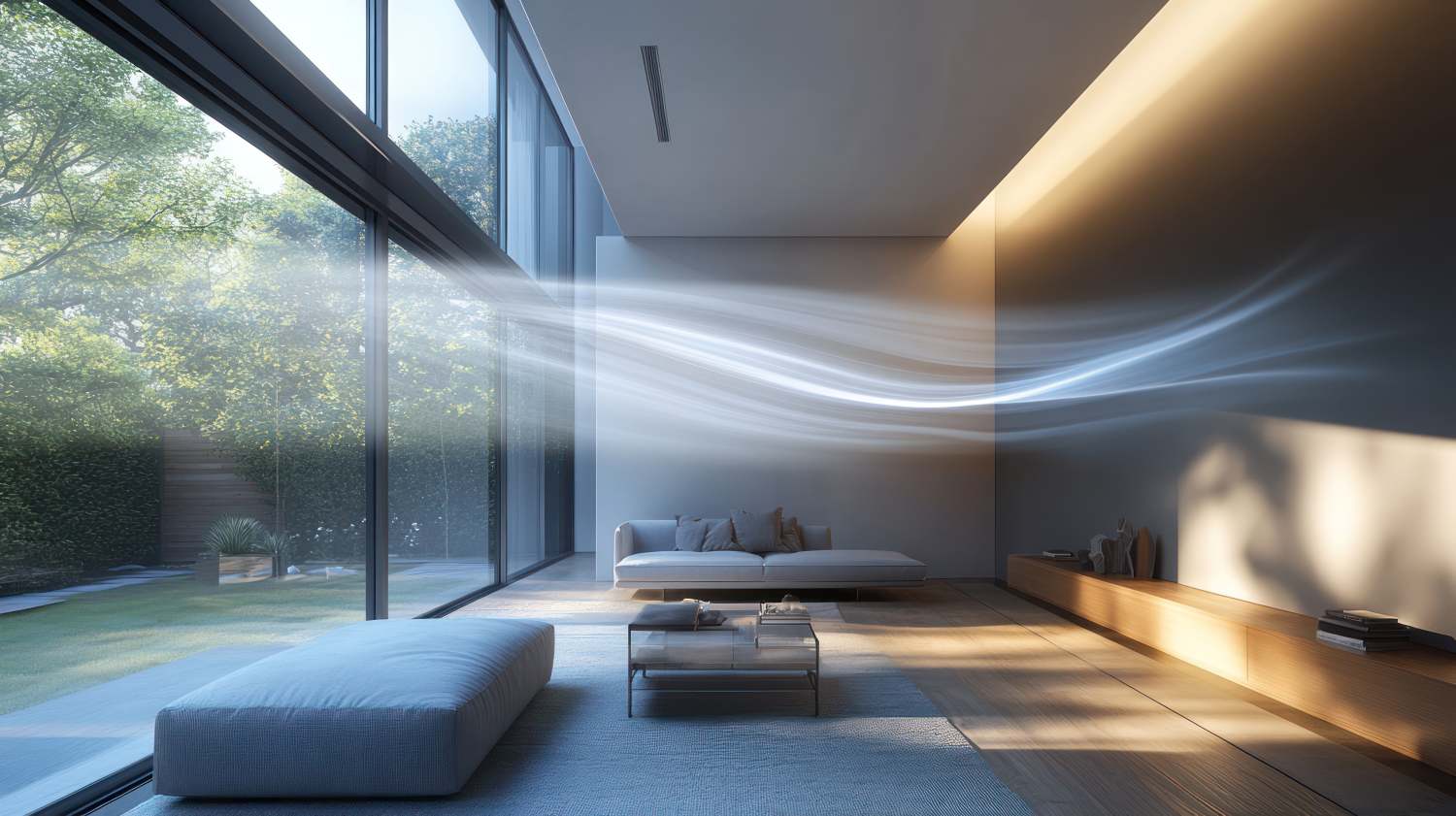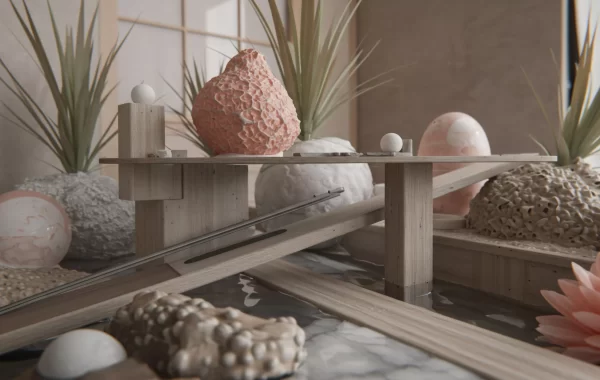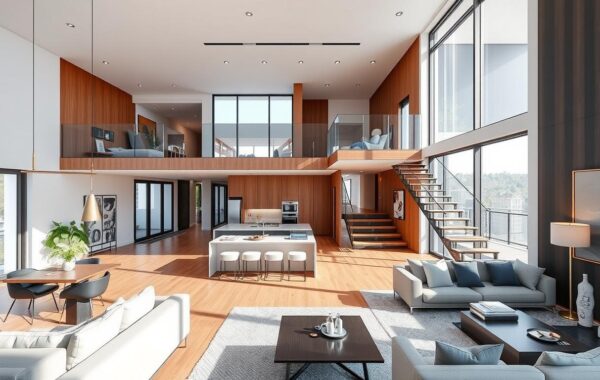We obsess over lighting, layout, and color palettes. We choose furniture with precision, debate over matte vs. gloss finishes, and fuss over fixtures and accents. But there’s one invisible factor that determines whether a home feels alive or flat, invigorating or stifling—airflow.
As a world-class interior designer with a deep respect for sensory design, I can tell you this: great interiors breathe. They’re not just styled for the eye—they’re engineered for movement, freshness, and invisible comfort.
Welcome to the world of airflow design—the subtle, often ignored, art of shaping how air moves through a space. Mastering this detail doesn’t just improve health and efficiency; it transforms how people feel in a room, without them ever realizing why.

🌀 What Is Airflow Design?
Airflow design is the strategic planning of how air circulates through interiors—naturally or mechanically—to maintain freshness, regulate temperature, prevent stagnation, and enhance overall well-being.
It includes:
- Cross ventilation and window placement
- Ceiling height and circulation patterns
- Furniture layout that doesn’t block flow
- Mechanical systems like fans, vents, and HVAC
- The integration of passive and active airflow solutions
While HVAC engineers often focus on temperature control, a designer’s role is to ensure that airflow supports how people live, move, and feel in a space.
🌬 Why Airflow Matters More Than You Think
The impact of airflow goes far beyond comfort. It affects:
- Cognitive Function & Focus
Poor airflow leads to CO₂ buildup, which impairs concentration, decision-making, and mental clarity. In home offices, study zones, or creative studios, this can sabotage productivity.
- Health & Wellness
Stale air encourages the growth of mold, allergens, and airborne pollutants. Proper airflow supports respiratory health and reduces fatigue.
- Emotional Regulation
Fresh air lowers cortisol and creates a sense of ease. In a poorly ventilated room, people tend to feel irritable, lethargic, or anxious—even if everything looks perfect.
- Energy Efficiency
Natural airflow reduces dependency on artificial cooling or heating, cutting energy costs and environmental impact.
🏡 Designing for Natural Airflow
Natural airflow (also known as passive ventilation) uses the architecture itself to move air through a space without machines.
- Cross Ventilation
Position windows or openings on opposite walls to allow air to enter from one side and exit from the other. This is especially powerful in tropical or humid climates.
Pro Tip: Don’t just rely on large openings—small, strategically placed vents can create powerful microcurrents.
- Stack Effect
Hot air rises. Design double-height spaces or vented clerestories to allow warm air to escape upward, pulling cooler air in from below.
This works especially well in staircases, atriums, or mezzanine-style homes.
- Window Design
Choose casement or louvered windows over fixed panes. They allow better airflow control and can be adjusted to direct breezes.
Avoid: Overreliance on sliding windows that don’t open fully, blocking significant potential air movement.
🛋 Interiors That Allow Air to Flow
Good airflow can be destroyed by poor interior layout. Even the most ventilated architecture can feel suffocating if furniture and decor disrupt circulation.
- Avoid Air Traps
Large furniture placed against walls, especially near windows or vents, blocks airflow. Leave a few inches of space behind couches and cabinets to allow circulation.
- Use Open or Low-Profile Furniture
Choose furniture with raised legs, perforated panels, or open sides to let air move underneath and around. Avoid overstuffed, bulky pieces that stagnate the room.
- Zoning with Air in Mind
If your home uses open-plan design, create zones that allow for unobstructed airflow between them. A bookshelf with cutouts or a floating partition works better than a solid divider.
⚙️ Smart Use of Mechanical Airflow
While natural airflow is ideal, it’s not always enough—especially in dense cities or extreme climates. Here’s how to make smart use of mechanical airflow without compromising aesthetics:
- Ceiling Fans Are Back (But Better)
Modern fans now come in sleek, sculptural forms that double as decor. Use them to circulate air gently, especially in bedrooms and sunrooms.
Design Note: Opt for wood, matte black, or muted tones to blend seamlessly into luxury interiors.
- Ducted HVAC, Discreetly Done
If central air is necessary, conceal ducts behind design elements—recessed ceilings, paneling, or minimalist vents—to maintain visual harmony.
Don’t: Let vents blow directly onto seating or sleeping areas. It causes discomfort and disturbs body temperature regulation.
- Air Purifiers with Design Sensibility
Choose models that match your decor—brands now offer purifiers in natural wood, ceramic, or soft minimalist shapes. Keep them near traffic areas or enclosed zones.
🌱 Airflow & Biophilic Design
Airflow design pairs beautifully with biophilic principles. Air moving through greenery not only cools and cleans the air—it creates subtle sound and sensory feedback.
- Place plants near windows to act as natural air filters.
- Add hanging plants or tall palms in breezy corners to create visual movement as air flows.
- Incorporate indoor water features, which can enhance humidity and make the airflow feel more alive.
✨ Final Thought: Let Your Home Breathe
A beautiful room that doesn’t breathe is like a painting behind glass—still, sterile, and separated from life. But a space with thoughtful airflow feels alive, responsive, and calming.
Great design is about experience, not just appearance.
Airflow is the invisible thread that connects comfort, energy, and emotional ease. It’s what makes you linger longer, sleep better, and feel more at home.
So next time you rearrange a room, renovate, or build from scratch, don’t just ask “How does it look?”
Ask:
“How does the air move here?”
“Can this space breathe with me?”
Because when your home breathes, you do too.


